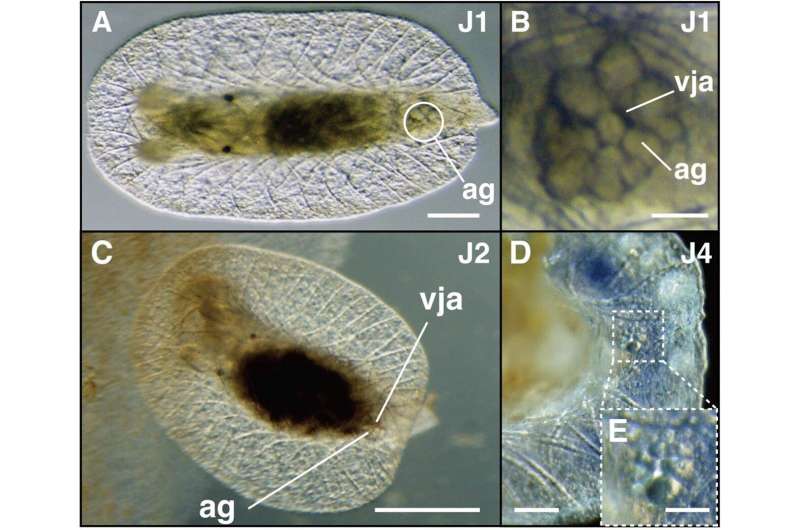This article has been reviewed according to Science X's editorial process and policies. Editors have highlighted the following attributes while ensuring the content's credibility:
fact-checked
peer-reviewed publication
trusted source
proofread
From egg to adult: The first successful lab rearing of the nudibranch sea slug Hypselodoris festiva

Nudibranchs are members of the phylum Mollusca, and most species have a planktonic larval stage characterized by the presence of shells immediately after hatching.
During development, larvae settle on the seabed and reefs where they metamorphose, lose their shells, and shift from a floating to a benthic lifestyle. However, the species of the family Chromodorididae, including brightly colored sea slugs such as Hypselodoris festiva and Chromodoris orientalis, have never been raised from eggs to adults in the laboratory, and the growth process from settlement to adulthood has been shrouded in mystery.
In a study published in Scientific Reports , the adults of H. festiva were collected and reared in the laboratory. They laid eggs, and approximately six days later, more than several thousand floating larvae hatched from a single egg mass.
Upon feeding with microalgae, eye spots and other features were formed and the larvae underwent metamorphosis about three weeks after hatching.
During metamorphosis, they shed their shells and transitioned to a benthic lifestyle. The juveniles grew by feeding on sponges, which were also the food of adult H. festiva. During this process, the juveniles developed a bright blue and yellow pattern on their bodies and the main organs characterizing the adult stage, such as rhinophores, gills, and anus, were formed.
Based on the observed body color formation and organogenesis, the post-settlement growth of H. festiva was classified into nine stages: two metamorphic stages and seven juvenile stages.
This classification allows the identification of the growth stages based on the external characteristics, with this study serving as a reference for further developmental studies of Chromodorididae.
The appropriate rearing conditions for the larvae, juveniles, and adults of species belonging to Chromodorididae were previously unknown; however, the methods established in this study can be applied to not only H. festiva, but other species, and can contribute to industrial and commercial uses, such as aquarium displays.
More information: Makiko Hayashi et al, Staging of post-settlement growth in the nudibranch Hypselodoris festiva, Scientific Reports (2024). DOI: 10.1038/s41598-024-66322-4
Journal information: Scientific Reports
Provided by University of Tsukuba




















